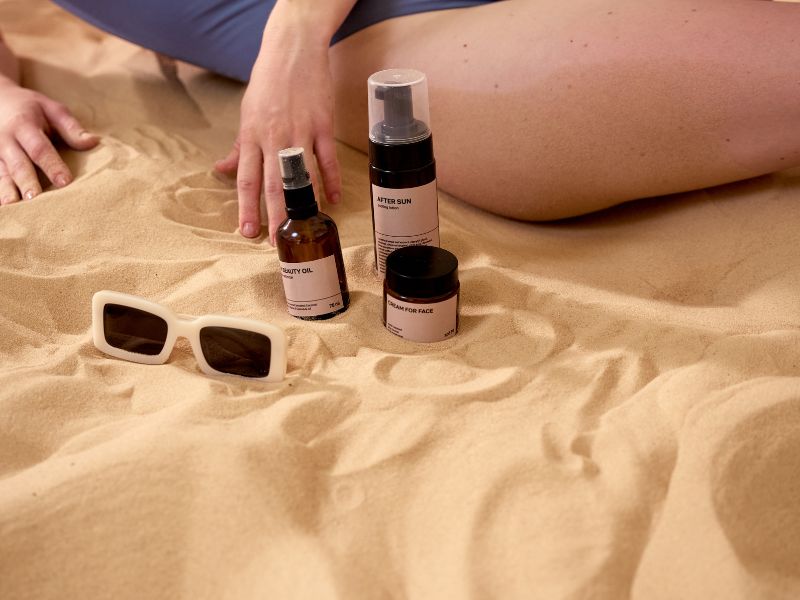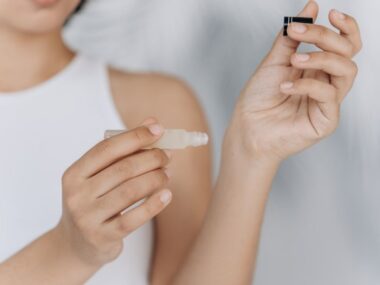Sunscreen is an essential component of any skincare routine, protecting against harmful UV rays and helping to prevent skin cancer, premature ageing, and sunburn. However, sunscreen in the eyes can be a common and frustrating issue. Not only can it cause stinging, watering, and discomfort, but it may also lead to involuntary tearing, smudging makeup, and ruining an otherwise perfect beach or outdoor day. This article provides a comprehensive guide on preventing sunscreen from irritating the eyes, exploring both practical application tips and the best products for those with sensitive skin.
Understanding Why Sunscreen Stings the Eyes
The main reason sunscreen can sting when it enters the eyes is due to its chemical ingredients. Many sunscreens contain avobenzone, octinoxate, oxybenzone, and other chemical UV filters, which are designed to absorb UV rays and transform them into harmless heat. Unfortunately, these ingredients can cause significant irritation when they come in contact with the eyes, leading to burning and stinging.
In addition to chemical filters, some sunscreens contain preservatives, fragrances, and alcohol, all of which can exacerbate eye irritation. Physical (or mineral) sunscreens, which use zinc oxide and titanium dioxide, are generally milder and less likely to cause stinging; however, improper application can still lead to discomfort. By selecting the right type of sunscreen and applying it carefully, it’s possible to keep your skin protected without sacrificing comfort.
Choosing the Right Sunscreen Formula
Opting for a mineral or physical sunscreen is often the first step toward avoiding eye irritation. Unlike chemical sunscreens, mineral formulas sit on top of the skin and reflect UV rays, offering gentle protection without the same risk of eye stinging. Physical sunscreens with zinc oxide and titanium dioxide are less likely to run or smudge into the eyes and are ideal for people with sensitive skin.
For those who prefer chemical sunscreens, choosing a water-resistant formula can help, as these are designed to stay in place even during activities like swimming or sweating. Additionally, some chemical sunscreens are formulated to be “eye-friendly” and specify that they won’t irritate the eyes, offering a more comfortable experience.
Fragrance-free and hypoallergenic formulas are also recommended for individuals prone to eye sensitivity, as they eliminate common irritants that can cause discomfort. Products labelled “non-comedogenic” (meaning they don’t clog pores) and those with moisturizing ingredients like aloe vera or glycerin may also be gentler on sensitive skin, reducing the risk of irritation.
Sunscreen Application Tips for Eye Safety
How you apply your sunscreen plays a crucial role in preventing it from seeping into your eyes. Here are some application tips for maximizing comfort and effectiveness:
Avoid Applying Sunscreen Directly Around the Eyes
One of the easiest ways to avoid sunscreen irritation is to steer clear of the immediate eye area. Apply sunscreen around the perimeter of your face, focusing on your cheeks, forehead, and nose. For sensitive areas close to the eyes, consider using a mineral sunscreen stick, which provides precise application and is less likely to smear or run.
To protect your eyelids, which are especially prone to sun damage, try using an eye-specific sunscreen, designed for the delicate eye area. Many SPF-infused eye creams are gentle, ophthalmologist-tested, and free of harsh ingredients that could irritate.
Use a Primer or Setting Powder
After applying sunscreen, a lightweight setting powder can help prevent smudging by absorbing excess oils and keeping the product in place. Look for powders with SPF for an added layer of sun protection. For even more staying power, consider applying a primer before your sunscreen. This creates a barrier that helps lock in sunscreen and other facial products, minimizing the risk of product migration.
Avoid Heavy Application and Rubbing
It can be tempting to lather on sunscreen in thick layers for better coverage, but this increases the likelihood of smudging. Instead, apply in light, even layers and gently pat the product into the skin rather than rubbing it. Rubbing increases the risk of sunscreen getting into the eyes, especially if you touch your face frequently throughout the day.
Allow Sunscreen to Fully Absorb
One of the main reasons sunscreen may migrate into the eyes is insufficient time for absorption. After applying sunscreen, allow 10-15 minutes for it to fully absorb before heading outside or applying makeup. This minimizes the chance of movement when you sweat or when additional products are layered on top.
Tips for Reapplying Sunscreen Without Irritating the Eyes
Reapplication is necessary to maintain protection, especially after sweating, swimming, or being outside for extended periods. However, reapplying sunscreen can be challenging, especially when trying to avoid eye irritation. Here are some helpful strategies for smudge-free reapplication:
Use a Sunscreen Stick for Targeted Reapplication
A sunscreen stick allows for more precise application, minimizing the risk of smudging around the eyes. Gently dab the stick around the perimeter of the eye area to avoid direct contact. Mineral sticks, in particular, are highly effective, as they stay in place without migrating into the eyes, even in humid or wet conditions.
Opt for a Powder Sunscreen
Powder sunscreens are an excellent option for reapplication without disrupting your makeup or risking eye irritation. These products come in convenient brush applicators, making it easy to target specific areas. Many powder sunscreens are formulated with mineral ingredients, which are gentle on sensitive skin and less likely to cause stinging.
Use a Setting Spray with SPF
For those looking for an even easier reapplication method, setting sprays with SPF offers a convenient solution. These sprays are lightweight and provide a protective barrier over makeup, allowing for a quick refresh of your sun protection. To avoid getting the spray in your eyes, close them tightly and hold the bottle at least 6-8 inches from your face while spraying.
Managing Sunscreen and Eye Sensitivity During Outdoor Activities
Outdoor activities, particularly in hot or humid conditions, increase the likelihood of sweating, which can cause sunscreen to drip into the eyes. To prevent this, choose a sunscreen with sweat-resistant or water-resistant properties. These sunscreens are designed to withstand moisture and stay in place, offering longer-lasting protection.
When engaging in high-intensity activities like running, biking, or hiking, consider wearing a sweatband or a cap to absorb excess sweat and reduce the chances of sunscreen migrating. Sunglasses with UV protection are another great addition, as they shield your eyes and prevent sunscreen from entering the delicate eye area.
First Aid for Sunscreen in the Eyes
Despite taking precautions, sunscreen can sometimes end up in the eyes, causing discomfort and irritation. Here’s what to do if you find yourself in this situation:
- Rinse Immediately with Clean Water: Use fresh, cool water to flush out your eyes as soon as possible. Avoid rubbing, which can exacerbate the irritation. If clean water isn’t available, use the saline solution if possible, as it’s gentle and effective for eye cleansing.
- Use Lubricating Eye Drops: After rinsing, lubricating eye drops can help soothe the eyes and relieve stinging. Avoid using any eye drops with preservatives or redness-reducing properties, as they may increase irritation.
- Avoid Touching or Rubbing the Eyes: It’s natural to want to rub your eyes when they’re irritated, but this can worsen the issue and potentially spread the sunscreen residue. Keep your hands away and allow your eyes to rest after flushing.
Sunscreen Ingredients to Avoid for Sensitive Eyes
If you have a history of eye sensitivity, checking product labels and avoiding specific ingredients can help prevent irritation. Common ingredients that may trigger eye discomfort include:
- Avobenzone: Known to cause stinging, particularly when combined with sweat.
- Oxybenzone: This chemical filter is a known allergen and can be particularly irritating for those with sensitive skin.
- Octocrylene: While effective, it may lead to eye irritation for certain users.
- Fragrances and Preservatives: Often included to improve the sensory experience, fragrances and preservatives are common irritants for those with sensitive skin or eyes.
Instead, consider products labelled “fragrance-free,” “hypoallergenic,” and “ophthalmologist-tested.” Mineral sunscreens containing only zinc oxide and titanium dioxide are often safer bets for those with eye sensitivities.
Choosing Eye-Friendly Sunscreens
For optimal comfort and protection, many dermatologists recommend eye-friendly sunscreens formulated for sensitive areas. Brands like CeraVe, EltaMD, and La Roche-Posay offer mineral-based sunscreens with broad-spectrum SPF protection that are gentle on sensitive skin. Products like Neutrogena’s Sheer Zinc Dry-Touch and Supergoop! Mineral Sunscreen Sticks are examples of mineral sunscreens that provide long-lasting protection without irritating the eyes.
These sunscreens typically have lighter textures and use non-comedogenic formulas, meaning they won’t clog pores or cause breakouts. Additionally, many of these brands offer SPF eye creams specifically designed to prevent eye-stinging, making them suitable for daily use around the delicate eye area.
Conclusion
Keeping sunscreen out of the eyes is a common yet manageable issue that can be addressed with thoughtful product choices and mindful application techniques. By opting for gentle, mineral-based sunscreens and taking the time to apply them strategically, you can protect your skin without compromising comfort. Avoiding heavy application, using setting powders or sprays, and choosing water-resistant formulas are all effective strategies for minimizing the risk of sunscreen migration. For those with sensitive skin or eyes, choosing products specifically formulated for the eye area and avoiding certain irritants can further enhance comfort.






